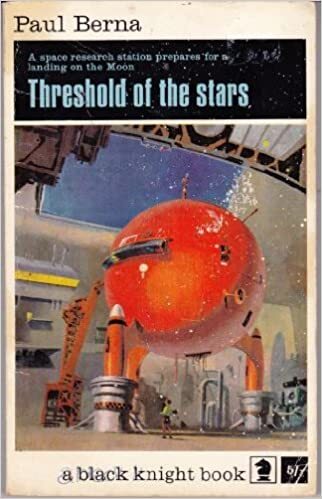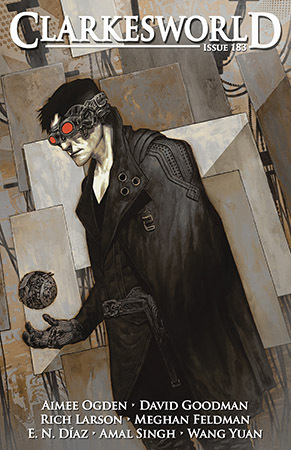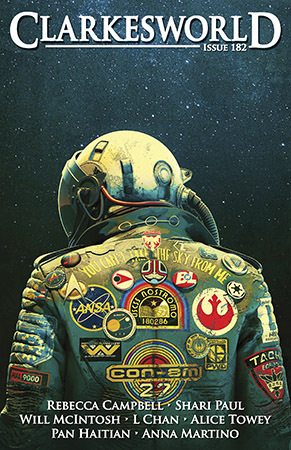Rachel S. Cordasco's Blog, page 17
January 7, 2022
Interview: Marlaine Delargy
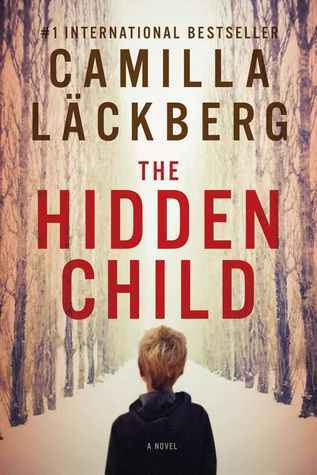
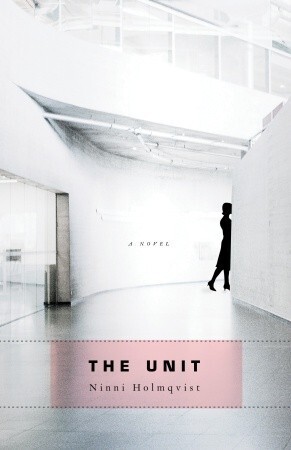
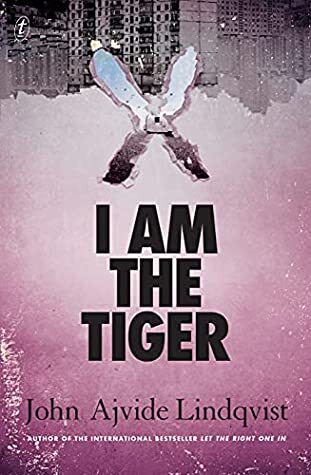
Marlaine Delargy grew up in Manchester, England; studied in Aberystwyth, Wales; worked in Sweden and Finland; and taught in Welshpool in Powys and Bewdley in Worcestershire until 2004. She now lives in rural Shropshire with the obligatory collection of spoiled cats.
Rachel Cordasco: You have translated many Swedish texts, the majority of which are crime/horror/detective novels. Why did you first learn Swedish, and when did you decide to become a translator from that language?
Marlaine Delargy: I’ve translated about 65 novels, mainly crime fiction, some literary fiction, plus eight of John Ajvide Lindqvist’s horror novels / short stories.
I studied Swedish and German at the University College of Wales, Aberystwyth in the 1970s, and eventually taught German in secondary schools in the UK for almost twenty years. I’d done some Swedish to English translation for Swedish Book Review, but never really thought of it as a possible career. When I turned 50 I decided I couldn’t face another ten or fifteen years telling teenagers to take their coats off and put their phones away, so I left and got a part-time job teaching IT to adults. Laurie Thompson, who edited Swedish Book Review for many years and was my tutor at Aberystwyth, put me in touch with the big Swedish literary agents, and on his recommendation they commissioned me to translate extracts from novels, non-fiction publications, catalogues, all kinds of things. One of those extracts was from Åsa Larsson’s first novel Sun Storm, and Random House USA then asked me to translate the whole book. That was the beginning; I continued teaching IT until the summer of 2010, and have been translating full-time ever since.
RC: Your recent speculative fiction translations include Ninni Holmqvist’s The Unit and John Ajvide Lindqvist’s Places Trilogy. In both Holmqvist and Lindqvist’s books, the horror doesn’t jump on the reader often (in terms of blood and gore) but seems to sneak in without the reader realizing it. Would you agree with that assessment? And more generally, do you approach Swedish speculative fiction differently than other genres?
MD: I translated The Unit in 2008, so not very recently…
I would definitely agree with your assessment; I found Ninni Holmqvist’s writing heart-breaking in its matter-of-fact simplicity. I wouldn’t normally read horror, but again I love the way John writes. There is always humour, even in the darkest tales, and there is a love story at the heart of everything he does. This is particularly true of The Kindness, a 700+ page epic which will be out in English later this year.
I wouldn’t say I approach this type of fiction differently; in every case the translator has to find the right ‘voice’ to suit the text, and obviously this is easier if you’ve translated several books by the same writer, but in the end it’s the quality of the writing that dictates the process.
RC: What are you translating these days? Also, what would you *like* to translate that you haven’t had time for?
MD: I’m about to go through the edit of Viveca Sten’s Hidden in Snow, which is the first in a new series of murder mysteries. Her ten previous crime novels were set on the island of Sandhamn in the Stockholm archipelago, but this one is set in the small community of Åre in northern Sweden, which gives a whole different vibe. I will be translating a novel for an agent next month, but can’t really say any more about that as it hasn’t been published yet. I recently translated an extract from Johan Theorin’s latest novel, and would love to translate the whole thing as he’s one of my favourite writers.
RC: What three things do you want readers of this interview to know about Swedish speculative fiction?
MD: That’s a difficult question to answer. I think I’d say give translated fiction a go; if it’s a good translation, then it should read as if it were written in English. A writer like John Ajvide Lindqvist has a very broad range; there is a vast difference between the Places Trilogy and earlier works like Harbour and Little Star. They also make fantastic films – Let the Right One In, of course, but Border, based on a short story in Let the Old Dreams Die, is also worth checking out.
Thanks so much to Marlaine for answering these questions!
January 4, 2022
Out This Month: January
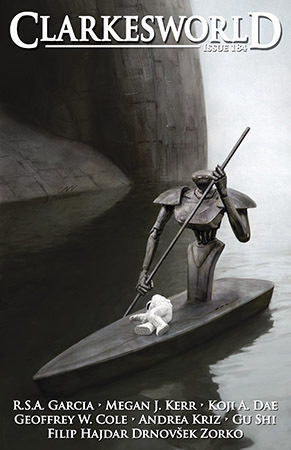 “No One at the Wild Dock” by Gu Shi, translated from the Chinese by S. Qiouyi Lu (Clarkesworld,
January 1)
“No One at the Wild Dock” by Gu Shi, translated from the Chinese by S. Qiouyi Lu (Clarkesworld,
January 1)
 “Devour Me” by Yuki Fuwa, translated from the Japanese by (World Literature Today, January)
“Devour Me” by Yuki Fuwa, translated from the Japanese by (World Literature Today, January)
 “The synchronism of touch” by Gabriela Damián Miravete, translated from the Spanish by Sally McCorry (Apex Magazine, January)
“The synchronism of touch” by Gabriela Damián Miravete, translated from the Spanish by Sally McCorry (Apex Magazine, January)
NOVELS
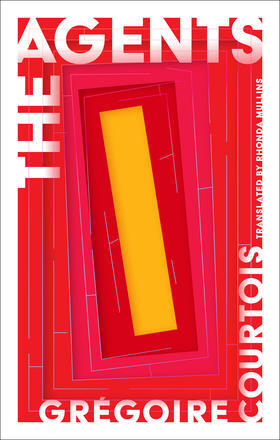 The Agents
by Grégoire Courtois, translated from the French by Rhonda Mullins (Coach House Books, January 18)
The Agents
by Grégoire Courtois, translated from the French by Rhonda Mullins (Coach House Books, January 18)
Nineteen Eighty-Four meets Tron, via The Office, in this boldly dystopian novel.
The agents don’t know what they’re agents of, but they’re very busy agenting, which means watching endless data feeds in their cubicles, cubicles that are piled one on top of another in a massive tower in which the agents both live and work. Empty floors serve as battlefields where different guilds of agents fight for territory. It seems that defenestration is the only way out, the ‘ballet of suicides.’ It is here we meet Théodore, who has amputated his own toes and must maintain a 30-degree angle to keep his balance. And Solveig, who is pregnant, though agents don’t usually have sex, as well as the artist Lazslo and self-mutilating Clara. And then there’s Hick, the new agent, who seems strangely happy and occupies a cubicle that is strategically very important. The battle for key territory is heating up, and the agents aren’t sure which of them will make it out alive. If, indeed, that’s what any of them want…
January 1, 2022
SFT 2021 Stats
 This year, I tried something different. Instead of just looking at how many short stories were published in magazines/webzines, and then grouping collections with novels and anthologies (while not pulling out the separate short stories in those collections), I decided to lay out how many short stories were published in zines and how many were published in collections. Collections (as singular items) are still counted in the “long-form fiction” category below, but now we can more clearly see how collections of stories contribute to the percentages of certain source languages.
This year, I tried something different. Instead of just looking at how many short stories were published in magazines/webzines, and then grouping collections with novels and anthologies (while not pulling out the separate short stories in those collections), I decided to lay out how many short stories were published in zines and how many were published in collections. Collections (as singular items) are still counted in the “long-form fiction” category below, but now we can more clearly see how collections of stories contribute to the percentages of certain source languages.
The top three source languages for short-form zine SFT in 2021 were Chinese (31.7%), Russian (22%), and Spanish (14.6%). The zines that published the most SFT were Clarkesworld (26.8%) and Future Science Fiction Digest (12.2%). For those stories published in collections and anthologies in 2021, the source languages look quite different: now the top three are Spanish (28.4%), Korean (11.6%), and Japanese (11%). We also saw one story from each of the following source languages: Bulgarian, Finnish, French, Greek, Icelandic, Kurdish, Norwegian, Persian, Polish, and Swedish.
In terms of long-form fiction (novels/collections/anthologies), we saw the highest number of stories translated from the German and Korean (13.5%), and from the Chinese and French (9.6%). Novels made up 62.3% of the long-form fiction, with collections making up 26.4% and anthologies 11.3%.
I plan to look back at numbers for previous years and factor in the stories published in collections for more accurate numbers. Stay tuned for a comprehensive look at SFT from 2016 to 2021!
SHORT-FORM FICTION
Stories in magazines/webzines
total: 41
[image error]
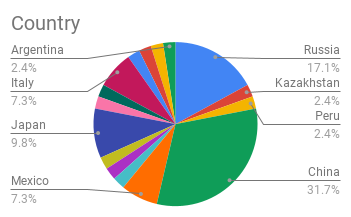
Chinese- 13 (31.7%) (China)
published in: Future Science Fiction Digest, Clarkesworld, Words Without Borders, SFRA Review, Tor.com, Galaxy’s Edge
Russian- 9 (22%) (Belarus, Kazakhstan, Russia)
published in: F&SF, Samovar, Future Science Fiction Digest, Clarkesworld, Asimov’s, World Literature Today, Words Without Borders
Spanish- 6 (14.6%) (Argentina, Mexico, Peru, Spain)
published in: Constelación Magazine, Future Science Fiction Digest, Clarkesworld, Lightspeed
Japanese- 4 (9.8%)
published in: Hivemind
Italian- 3 (7.3%)
published in: Samovar, SFinTranslation.com
Arabic- 2 (4.9%) (Iraq, Mauritania)
published in: Words Without Borders, Vestal Review
Bulgarian, Czech, Icelandic, Indonesian- 1 each (2.4%)
Bulgarian published in: SFRA Review
Czech published in: Clarkesworld
Icelandic published in: Words Without Borders
Indonesian published in: Samovar
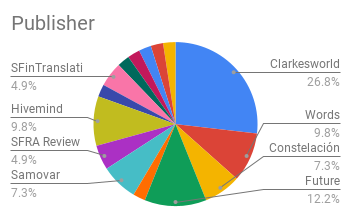
Clarkesworld– 11 (26.8%)
Future Science Fiction Digest– 5 (12.2%)
Hivemind, Words Without Borders– 4 each (9.8%)
Constelación, Samovar– 3 each (7.3%)
SFRA Review, SFinTranslation.com– 2 each (4.9%)
Asimov’s, F&SF, Galaxy’s Edge, Lightspeed, Tor.com, Vestal Review, World Literature Today– 1 each (2.4%)
* * *
Stories in collections/anthologies
total: 155
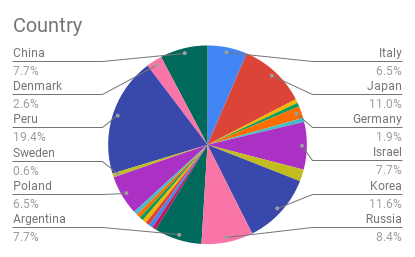
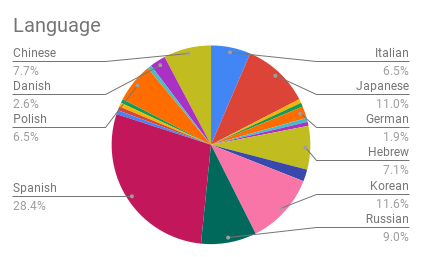
Spanish- 44 (28.4)
The Dangers of Smoking in Bed (Enriquez), Little Bird (Donoso), “Dump” and “Rue Chair” (The Best of World SF)
Korean- 18 (11.6%)
I’m Waiting for You (Kim), Cursed Bunny (Chung)
Japanese- 17 (11%)
“Precious Stones” (Elemental), Terminal Boredom (Suzuki), Fast Forward Japan (Unno), “Prayer” (The Best of World SF)
Russian- 14 each (9%)
The Little Devil and Other Stories (Remizov), “Above the Clouds, Above the Mountains, Above the Sky” (More Zion’s Fiction)
Chinese- 12 (7.7%)
Sinopticon (ed. Ni)
Hebrew- 11 (12.8%)
“The Weather Woman” (Elemental), More Zion’s Fiction (eds. Lottem, Teitelbaum)
Italian- 10 (6.5%)
“Chronotope” (Ab Terra 2020), Futurespotting (Verso), “Beautymark” (European Science Fiction #1)
Polish- 10 (6.5%)
“Lying Weather” (European Science Fiction #1), The Truth and Other Stories (Lem)
Danish- 4 (2.6%)
After the Sun (Eika)
German- 3 (1.9%)
“We Have Lived Here Since We Were Born” (Elemental), “Planned Obsolescence” and “Petware” (European Science Fiction #1)
Portuguese- 3 (1.9%)
Love: An Archaeology (Fernandes)
Bulgarian, Finnish, French, Greek, Icelandic, Kurdish, Norwegian, Persian, Polish, Swedish- 1 each (.6%)
Bulgarian: “The Keresztury TVirs” (Elemental)
Finnish: “The Naming Tree” (European Science Fiction #1)
French: “Lalana” (Elemental)
Greek: “Roseweed” (European Science Fiction #1)
Icelandic: “The Cryptid” (The Best of World SF)
Kurdish: “Jamshid Khan” (Elemental)
Norwegian: “Ankomst” (Elemental)
Persian: “Dog Rose in the Wind, the Rain, the Earth” (Elemental)
Polish: “Lying Weather” (European Science Fiction#1)
Swedish: “Reaping Day” (European Science Fiction #1)
LONG-FORM FICTION
Novels, Collections, Anthologies
[image error]
[image error]
German, Korean- 7 each (13.5%)
Chinese, French- 5 each (9.6%)
Polish, Spanish- 4 each (7.7%)
Czech, Japanese, various- 3 each (5.8%)
Arabic, Italian, Swedish- 2 each (3.8%)
Portuguese, Greek, Russian, Danish, Hebrew- 1 each (1.9%)
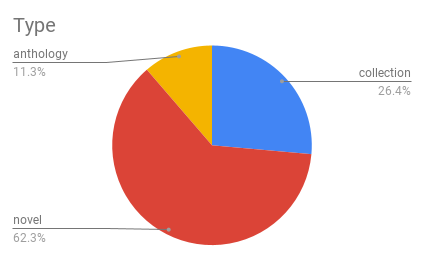
novels- 33 (62.3%)
German (7), French (5), Chinese (3), Czech (3), Korean (3), Polish (3), Spanish (3), Arabic (2), Swedish (2), Italian (1), Japanese (1)
collections- 14 (26.4%)
Korean (4), Japanese (2), Spanish (2), Chinese (1), Danish (1), Italian (1), Polish (1), Portuguese (1), Russian (1)
anthologies- 6 (11.3%)
various (3), Chinese (1), Greek (1), Hebrew (1)
December 24, 2021
More Shimon Adaf
 [image error] OMGOMGOMGOMGOMG a whole TRILOGY by Israeli SF author
[image error] OMGOMGOMGOMGOMG a whole TRILOGY by Israeli SF author
 Shimon Adaf is coming out in 2022 in English!! Thank you to translator Yardenne Greenspan and to Picador for making this happen!
Shimon Adaf is coming out in 2022 in English!! Thank you to translator Yardenne Greenspan and to Picador for making this happen!
So while you wait, go read some Shimon Adaf that’s already in English: here, Sunburnt Faces, and “They Had to Move” (Zion’s Fiction).
Synopses:
One Mile and Two Days Before Sunset
December 22, 2021
1950s French SFT
 Over on Science Fiction and Other Suspect Ruminations, Joachim Boaz reviews Jean-Louis Curtis’s 1956 collection The Neon Halo (tr. Humphrey Hare, 1958). Here’s a brief excerpt from the review:
Over on Science Fiction and Other Suspect Ruminations, Joachim Boaz reviews Jean-Louis Curtis’s 1956 collection The Neon Halo (tr. Humphrey Hare, 1958). Here’s a brief excerpt from the review:
The French novelist Jean-Louis Curtis (1917-1995), best known for his Prix Goncourt-winning The Forests of the Night (1947), crafts a linked series of short stories in The Neon Halo (1956, trans. 1958) that chart the evolution of modern society between 1995-circa 2100. While the thematic influence of George Orwell’s 1984 (1949) and Aldous Huxley’s Brave New World (1932) permeates the pages (permanent warfare, reproductive technology, psychological and pharmaceutical conditioning, etc.), The Neon Halo contains genuine vibrancy and intriguing ruminations on persecution and martyrdom. Despite the frequent references to the French literary environment of Curtis’ day. The Neon Halo pulses with wit and levity despite the dour subject matter.
Other French SFT from the 1950s:
December 15, 2021
Studies in Global Science Fiction
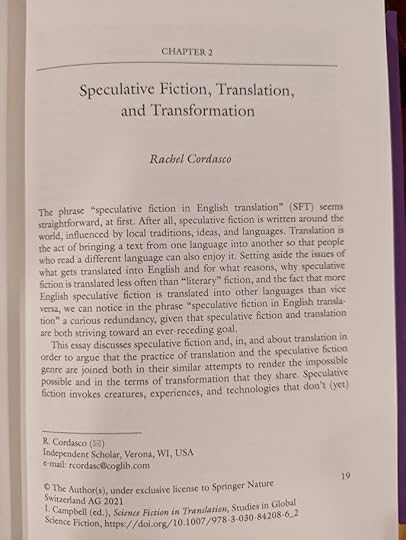 Congrats to Ian Campbell on the publication of Science Fiction in Translation: Perspectives on the Global Theory and Practice of Translation (out from Palgrave- part of their “Studies in Global Science Fiction” series).
Congrats to Ian Campbell on the publication of Science Fiction in Translation: Perspectives on the Global Theory and Practice of Translation (out from Palgrave- part of their “Studies in Global Science Fiction” series).I’m honored to have been asked to contribute a chapter!
December 5, 2021
Review: The Membranes by Chi Ta-wei
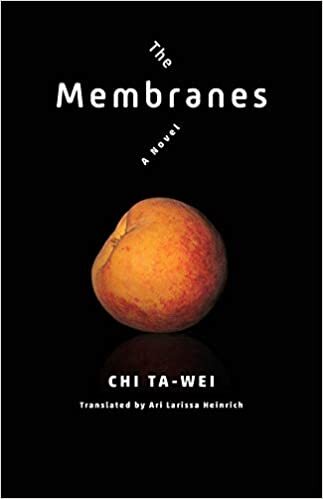 I reviewed Taiwanese author Chi Ta-wei’s novella The Membranes, translated by Ari Larissa Heinrich, for Strange Horizons.
I reviewed Taiwanese author Chi Ta-wei’s novella The Membranes, translated by Ari Larissa Heinrich, for Strange Horizons.
Here’s an excerpt from the review:
Novellas are a famously difficult species: neither short stories nor novels, they often can’t find a home, since publishers are hesitant to invest time and money in them. Nonetheless, here we have Taiwanese author Chi Ta-wei’s The Membranes: “a perfect novella,” by which I mean that it does exactly, and only, what it needs to do in the exact amount of space it needs to do it.
Read the entire review here.
December 1, 2021
Out This Month: December
SHORT STORIES
“Other Stories” by Wang Yuan, translated from the Chinese by Andy Dudak (Clarkesworld, December 1)
November 18, 2021
Review: The Deep Sea Diver’s Syndrome by Serge Brussolo
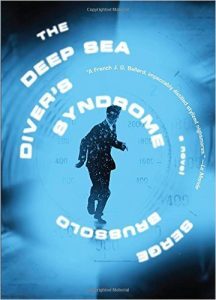 translated by Edward Gauvin
translated by Edward Gauvin
Melville House Books
January 19, 2016
220 pages
grab a copy here or or through your local independent bookstore or library
Dredging up ectoplasmic objects from your dreams to sell to art connoisseurs may seem sexy and glamorous, but for David Sarella, it’s grueling work.
Like his mother, David has this strange ability to retrieve…something…from his dreams- something that escapes through his mouth and coalesces into an abstract, tangible object in the real world. Eventually, non dream-divers realize that whenever they draw near to one of these ectoplasms, they suddenly feel fantastic. Their skin clears up, their energy returns, and they act twenty years younger.
Brussolo focuses on David, though, and his difficult life, since dreamers (or “deep sea divers”) must be monitored on their “expeditions”: they receive glucose drips and any medications necessary to keep their vitals steady. Whenever David wakes up from one of his jaunts, he feels exhausted and can barely eat. If a diver doesn’t have round-the-clock monitoring, they can die of starvation or brain trauma.
For a while now, David’s dreams have only been producing small objects that sell for very little. He can’t, for instance, produce anything like the mega dream-object of the great diver Soler Mahus, whose masterpiece takes up the great hall in the Museum of Modern Art. Soler, though, is in bad shape, having dreamed himself into emaciation and senility.
What makes this a tight, fast-paced, surrealistic novel (bet you didn’t expect those three terms in the same sentence!) is Brussolo’s deft management of imagery and metaphor across the two worlds. We first meet David escaping from a dream-level jewel heist, aided by a redhead named Nadia and their getaway driver Jorgo. Later, we learn that as a kid in the real world, David had an uncontrollable desire to steal junk and then throw it away. We’re also told that his favorite books were fast-paced thrillers and crime novels, which color his dreams and give them shape. Thus when David is stealing diamonds from a safe in the dream world, his mind is giving form to the ectoplasms that he is producing in the real world.
Eventually, David has to make a decision- embark on a dangerously deep dive to potentially rescue his career, or die trying.
This is a relatively short book, and I was expecting a crazy ending- something like David realizing that the dream world and the real world were actually reversed, or David bringing up an object that would destroy the symbiotic relationship humans have developed with the ectoplasms. Instead, the story seems to drop off, which is a shame, since 95% of it is fascinating and well-done.
Of course, credit for the skillful and deft translation goes to Edward Gauvin, whose command of French and English is always exquisite. Here are two short Brussolo stories that he translated on Weird Fiction Review: “Funnyway” and “Sun of Sulfur”.
So go read The Deep Sea Diver’s Syndrome (preferably in just a couple of sittings) and let me know your thoughts in the comments.
November 6, 2021
Out This Month: November
SHORT STORIES
“Lajos and his Bees” by K.A. Teryna, translated from the Russian by Alex Shvartsman (The Magazine of Fantasy and Science Fiction, November/December)
“City of Eternity” by Pan Haitian, translated from the Chinese by Carmen Yiling Yan (Clarkesworld, November 1)
ANTHOLOGIES
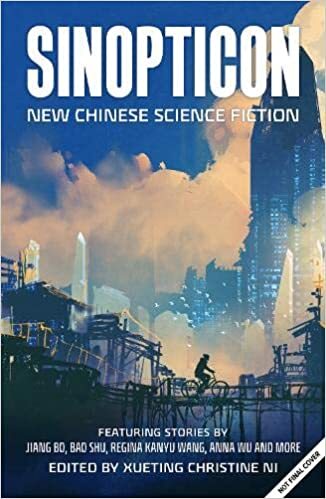 Sinopticon: New Chinese Science Fiction
, edited and translated from the Chinese by Xueting Christine Ni (Solaris, November 9)
Sinopticon: New Chinese Science Fiction
, edited and translated from the Chinese by Xueting Christine Ni (Solaris, November 9)
This celebration of Chinese Science Fiction–thirteen stories translated for the first time into English–represents a unique exploration of the nation’s speculative fiction from the late 20th Century onwards, curated and translated by critically acclaimed writer and essayist Xueting Christine Ni. From the renowned Jiang Bo’s ‘Starship: Library’ to Regina Kanyu Wang’s ‘The Tide of Moon City’, and Anna Wu’s ‘Meisje met de Parel’, this is a collection for all fans of great fiction.
REVIEWS

